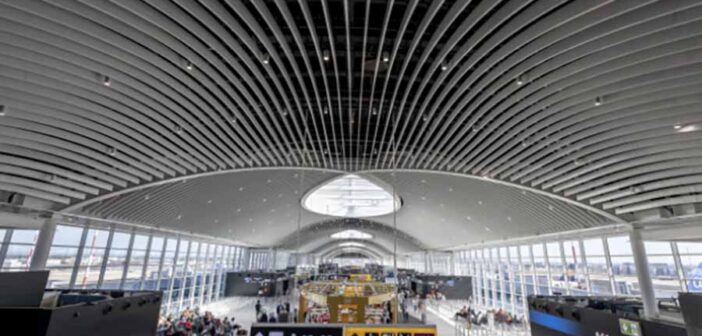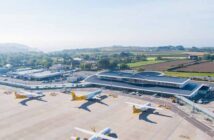Rome’s Leonardo da Vinci–Fiumicino Airport, Italy’s busiest hub, handles millions of passengers annually with a well-organised setup designed for efficiency. Serving as the primary gateway to the Eternal City, this airport connects travellers to destinations worldwide through major airlines like ITA Airways and budget carriers such as Ryanair and Wizz Air. Located 35 kilometres southwest of Rome’s city centre, Fiumicino offers a smooth experience for those eager to explore the capital or connect to other flights.
Accessing Fiumicino is straightforward, with multiple transport options catering to different budgets. The Leonardo Express train provides a direct 30-minute journey to Roma Termini station, departing every 15 minutes for around €14. For a cheaper alternative, the FL1 regional train connects to stations like Roma Tiburtina or Ostiense for €8, ideal for those linking to Rome’s metro or tram network. Shuttle buses, such as Terravision or SIT, offer fares from €6, taking 45 to 60 minutes to reach Termini, though traffic can extend travel time.
Taxis provide a fixed €50 fare to central Rome, typically a 30- to 45-minute ride, while car rentals and private transfers are available for added convenience. The airport’s proximity and clear signage make getting to and from the city hassle-free, though pre-booking tickets for trains or buses is recommended to avoid queues.
The airport’s layout is clear and manageable, with two main operational terminals: Terminal 1 for domestic and Schengen flights, and Terminal 3 for international and some Schengen routes. Moving walkways and shuttle buses connect the terminals, keeping walking times reasonable, though longer distances may be required for international gates. Check-in counters, security checkpoints, and boarding gates are well-marked, with self-service kiosks speeding up the process for those without checked luggage.
Security checks are generally efficient, often taking 10 to 15 minutes, but arriving two hours early for international flights or three for intercontinental ones ensures ample time.
Delays can occur, particularly during peak summer months from June to September, when passenger volumes are high. Air traffic control issues across Europe or staffing shortages may also disrupt schedules, so checking flight status in advance is prudent. The airport maintains solid on-time performance, bolstered by its role as a hub for ITA Airways, though congestion at security or immigration during busy periods can slow things down. For connecting flights, minimum connection times are 35 minutes for domestic and 40 minutes for international, with clear signage guiding passengers to transit areas. However, international connections may require passing through passport control, so allowing at least two hours is wise to avoid rushing.
Dining at Fiumicino is diverse, catering to a range of tastes. From quick bites at Mokà Algida for coffee and pastries to Antonello Colonna’s Open Bistro for an all-you-can-eat buffet, options abound. San Crispino serves renowned gelato, while Foglie offers fresh salads for lighter fare. Rosso Intenso is perfect for a glass of wine, and familiar chains like McDonald’s are available for convenience. Retail is equally appealing, with Terminal 3’s tax-free mall boasting luxury brands like Gucci and Chanel, alongside Aelia Duty-Free for perfumes and cosmetics. Terminal 1’s shops, including WH Smith and Feltrinelli, cater to last-minute needs or souvenirs, with personal shopper services available for a tailored experience.Facilities enhance the passenger experience, with free Wi-Fi throughout, currency exchange, ATMs, and a pharmacy in Terminal 3. Family-friendly amenities include nurseries with cots and changing mats, plus children’s play areas in both terminals. Accessibility is prioritised, with ramps, lifts, and dedicated assistance for passengers with reduced mobility. Lounges like Plaza Premium and Casa Alitalia offer comfortable seating, refreshments, and showers for a fee, accessible to all travellers. For those with layovers, HelloSky provides airside rooms for short naps, while the Hilton, connected via a covered walkway, offers overnight stays. The airport operates 24 hours, though some services may close overnight.




